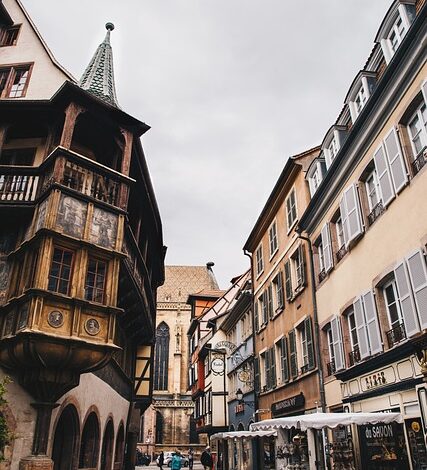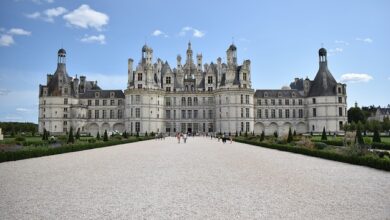Exploring Italy’s Small Towns and Rural Villages: A Journey Through Timeless Beauty

Italy, renowned for its bustling cities like Rome, Florence, and Venice, often overshadows the hidden gems nestled in its countryside. Beyond the tourist-packed streets of these iconic metropolises lies a quieter, more enchanting side of Italy—its small towns and rural villages. These lesser-known destinations offer an authentic glimpse into Italian life, where time seems to stand still, traditions are preserved, and landscapes are nothing short of breathtaking. Join us as we embark on a journey through Italy’s most captivating small towns and rural villages.
Why Visit Italy’s Small Towns?
While the major cities provide a taste of Italy’s grandeur, it is in the smaller towns that you truly experience the soul of the country. Here, cobblestone streets wind through medieval architecture, family-owned trattorias serve dishes passed down through generations, and locals greet you with warm smiles. The pace of life slows down, allowing visitors to savor every moment. Whether you’re seeking history, culture, or natural beauty, Italy’s small towns have something for everyone.
1. Civita di Bagnoregio: The Dying Town Hanging on a Cliff
Perched atop a crumbling tuff cliff in Lazio, Civita di Bagnoregio is often referred to as “The Dying Town.” Accessible only by a pedestrian bridge, this tiny village feels like stepping into a fairytale. With just a handful of residents remaining, Civita exudes an aura of mystery and tranquility. Wander through its narrow alleys, admire the Etruscan-era ruins, and take in panoramic views of the surrounding valleys. As clouds drift below your feet, you’ll feel transported to another world.
Must-Do: Don’t miss the chance to watch the sunset from the edge of the town—it’s a sight you won’t forget.
2. Matera: A Living Cave City
Located in the southern region of Basilicata, Matera is one of the oldest continuously inhabited cities in the world. Known for its ancient cave dwellings, called Sassi , Matera offers a unique blend of history and rugged charm. Once considered impoverished, the city has transformed into a UNESCO World Heritage Site and a hub for artists and filmmakers. Explore the labyrinthine streets carved into limestone, visit rock-hewn churches adorned with frescoes, and enjoy local delicacies such as pane di Matera (Matera bread).
Pro Tip: Stay overnight in a converted cave hotel for an unforgettable experience.
3. Alberobello: The Land of Trulli
In Puglia, the picturesque town of Alberobello is famous for its distinctive cone-shaped houses known as trulli . These whitewashed structures, topped with gray stone roofs, create a whimsical landscape straight out of a storybook. Stroll through the Rione Monti district, shop for handmade crafts, and climb to the rooftop terraces for stunning vistas. Alberobello’s charm lies not only in its architecture but also in its vibrant festivals and welcoming atmosphere.
Fun Fact: Many trulli feature mystical symbols painted on their roofs, believed to ward off evil spirits.
4. Orvieto: A Hilltop Haven in Umbria
Nestled atop a volcanic plateau in Umbria, Orvieto is a treasure trove of art, history, and gastronomy. Its crowning jewel is the magnificent Orvieto Cathedral, whose intricate facade rivals any masterpiece in Europe. Beneath the surface, a network of underground caves reveals secrets from centuries past. Above ground, indulge in regional specialties like umbricelli pasta and porchetta , paired with Orvieto Classico wine.
Don’t Miss: Take a guided tour of the Pozzo di San Patrizio, a 16th-century well engineered to supply water during sieges.
5. Castelluccio di Norcia: Nature’s Canvas
For nature lovers, few places rival the ethereal beauty of Castelluccio di Norcia in the Apennine Mountains. This remote village sits amidst the Sibillini National Park, offering jaw-dropping views of rolling hills and wildflower meadows. Every spring, the Fioritura (flowering) transforms the landscape into a kaleidoscope of colors, attracting photographers and hikers alike. Despite being devastated by earthquakes in recent years, Castelluccio remains resilient, embodying the spirit of rural Italy.
Adventure Alert: Hike along the trails leading to Mount Vettore for an exhilarating day outdoors.
6. Positano and the Amalfi Coast Villages
No exploration of Italy’s small towns would be complete without mentioning the Amalfi Coast. While Positano steals much of the spotlight with its colorful buildings cascading down cliffs, nearby villages like Ravello and Atrani deserve equal attention. Ravello enchants with its lush gardens and classical music festivals, while Atrani offers a quieter alternative to its glamorous neighbor. Sip limoncello made from locally grown lemons, swim in crystal-clear waters, and soak up the Mediterranean vibe.
Insider Tip: Visit during shoulder seasons (spring or fall) to avoid crowds and enjoy lower prices.
7. Pitigliano: The Little Jerusalem
Tucked away in Tuscany, Pitigliano earned the nickname “Little Jerusalem” due to its historical Jewish community. Perched dramatically on a ridge of volcanic rock, this town blends Etruscan heritage with Renaissance elegance. Walk through the old Jewish quarter, explore the synagogue, and marvel at the aqueduct that spans the valley. For food enthusiasts, Pitigliano’s kosher bakery serves traditional treats like sfratti (honey-and-nut-filled pastries).
Cultural Insight: Learn about the coexistence of different faiths in this historically significant town.
8. Marostica: Where Chess Comes Alive
In Veneto, the charming town of Marostica hosts one of Italy’s quirkiest events—the Human Chess Game. Held every two years on even-numbered years, this spectacle recreates a chess match using costumed actors on a giant board in the main square. Even if you don’t catch the event, Marostica delights with its medieval castle, romantic piazzas, and artisanal lacework.
Unique Experience: Try your hand at making Venetian-style masks in a local workshop.



